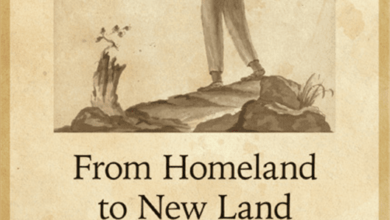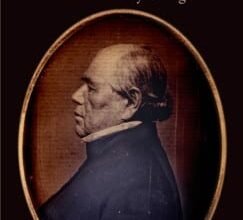F.C. Yohn: Artist & Illustrator of New York History


 In early October 1900, the Glens Falls Insurance Company announced receipt of an illustration for publication in their 1901 calendar. The painting was by F.C. Yohn, a commercial artist, whose numerous-creative works dramatically portrayed Americana.
In early October 1900, the Glens Falls Insurance Company announced receipt of an illustration for publication in their 1901 calendar. The painting was by F.C. Yohn, a commercial artist, whose numerous-creative works dramatically portrayed Americana.
Yohn’s 1900-produced painting interpreted the death scene of Colonel Ephraim Williams, a British provincial officer from Massachusetts, who perished in the Battle of Lake George on September 8, 1755.
F. C. Yohn (his professional name) was also known as Frederick Coffay Yohn. He was born in Indianapolis, Indiana on February 8, 1875 and died on June 3, 1933 at the age of 58 in Norwalk, Connecticut. Yohn was trained at the Indianapolis Art School and also studied and later taught at the Arts Student League of New York in Manhattan.

 Yohn was one of our country’s most prolific artists, specializing in painting frontier and historical military scenes. His works appeared regularly in Harper’s Magazine, Scribner’s Magazine, Collier’s Weekly, and in books, too. He even illustrated a World War One recruitment poster.
Yohn was one of our country’s most prolific artists, specializing in painting frontier and historical military scenes. His works appeared regularly in Harper’s Magazine, Scribner’s Magazine, Collier’s Weekly, and in books, too. He even illustrated a World War One recruitment poster.
The artist spent a lot of time in libraries doing research and sometimes even visited heritage sites before painting them. In an article in the New York Times in 1907, Yohn told how he took a year to create 17 illustrations for Manhattan-born Theodore Roosevelt’s book, Oliver Cromwell (a 1906 edition limited to 1,000 copies).
In the early 20th century, Yohn was commissioned by the Glens Falls Insurance Company, later known as the Continental Insurance Company, to complete several paintings depicting Lake George-area history.
Among these were: “Battle of Lake George” (1755), “Death of Col. Williams” (1755), and the “Embarkation of Abercrombie’s Expedition” (1758). Those art pieces were published in calendars done by the insurance agency.
Moreover, F. C. Yohn illustrated the 1929 U.S. commemorative 2-cent stamp for the 150th anniversary of George Rogers Clark’s victory over the British at the Battle of Vincennes in Indiana in February 1779.

 In 1977, a 13-cent Bicentennial stamp, “Herkimer at Oriskany 1777 by Yohn,” was released. It pictured a mortally wounded General Nicholas Herkimer lying on the battlefield.
In 1977, a 13-cent Bicentennial stamp, “Herkimer at Oriskany 1777 by Yohn,” was released. It pictured a mortally wounded General Nicholas Herkimer lying on the battlefield.
Dr. Russell P. Bellico, a Lake Champlain and Lake George maritime and military historian, has used some Yohn paintings in his history books. Yohn’s “Battle of Lake George” (1755) appeared in Bellico’s 2010 book, Empires in the Mountains: French and Indian War Campaigns and Forts in the Lake Champlain, Lake George, and Hudson River Corridor and also in Bellico’s 1995 book, Chronicles of Lake George: Journeys in War and Peace.
F. C. Yohn’s “Embarkation of Abercrombie’s Expedition” (1758) was likewise published in Bellico’s book, Sails and Steam in the Mountains: A Maritime and Military History of Lake George and Lake Champlain (1992, 2001).
![]()
![]() Abercrombie’s [sic – Abercromby’s] Expedition painting also was used in the 2005 video documentary–“The Lost Radeau: North America’s Oldest Intact Warship” (Pepe Productions, Bateaux Below, and other producers).
Abercrombie’s [sic – Abercromby’s] Expedition painting also was used in the 2005 video documentary–“The Lost Radeau: North America’s Oldest Intact Warship” (Pepe Productions, Bateaux Below, and other producers).
“By today’s standards, Yohn’s illustrations of Lake George historical events have a few inaccuracies, but do, nonetheless, portray a respectable flavor of the colonial era,” noted Russell P. Bellico.
F. C. Yohn’s history compositions, done over a century ago, have clearly helped frame our perception of 18th-century military life.
Read more about military history in New York State.
A version of this article first appeared on the Lake George Mirror, America’s oldest resort paper, covering Lake George and its surrounding environs. You can subscribe to the Mirror HERE.
Illustrations, from above: Glens Falls Insurance Company lithograph, ca. 1900, showing F.C. Yohn’s “Battle of Lake George (Sept. 8, 1755)”; Detail of photographic portrait of F.C. Yohn, circa 1900; U.S. postage stamps with Yohn’s “Death of General Nicholas Herkimer at the Battle of Oriskany (1777),” issued in 1977; and Yohn’s Glens Falls Insurance Co. lithograph, ca. 1900 “Embarking at the head of Lake George of Abercrombie’s expedition against Fort Ticonderoga.”
Source link




